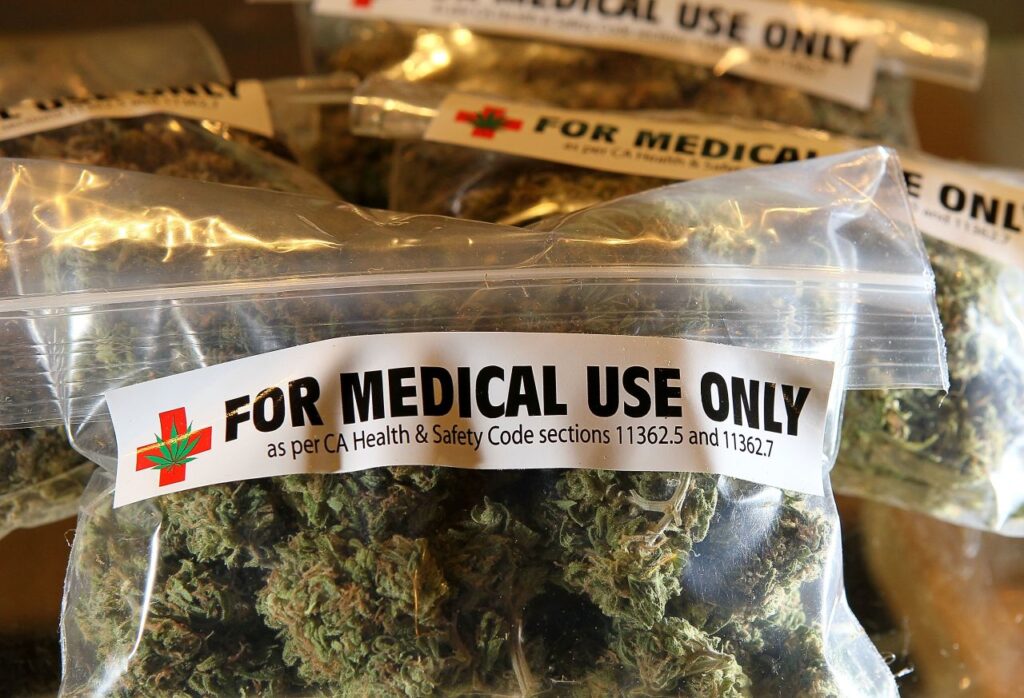Treating Ehlers-Danlos Syndrome with Medical Cannabis

Disorders of the skin, joints, and other connective tissues make up the EDS medical category. Extremely elastic skin and easily dislocated joints are the most noticeable symptoms of the disease. Joint pain and inflammation are common symptoms of EDS, and the fragility of skin and other connective tissues also causes significant discomfort for many patients. In order to alleviate these problems, the endocannabinoid system is stimulated, which is what medical cannabis does.
The endocannabinoid system is a network of receptors and neurotransmitters that the body produces naturally and that can affect hormone and neurotransmitter balance, among other things. The CB1 and CB2 receptors in the body can be stimulated by medical cannabis and its cannabinoids. While researchers are still trying to figure out exactly how endocannabinoids work, we do know that by activating certain receptors, we can alter how our bodies respond to things like pain, inflammation, and the immune system.
Cannabinoids like tetrahydrocannabinol (THC) and cannabidiol (CBD) are of particular interest for the treatment of Ehlers-Danlos syndrome because of their potential to enhance patients’ quality of life, and hence have received the greatest attention from researchers.
See also: Medical Cannabis Treatment for Osteoporosis
Medical Cannabis for the Treatment of EDS Symptoms
These symptoms are common among people with Ehlers-Danlos syndrome. Some people opt to use medical marijuana for help with the following:

Pain
Many people with EDS experience excruciating agony because their hyper-flexible joints frequently dislocate or fall out of the socket. CBD and medical marijuana both have potential for relieving pain, particularly neuropathic pain. It is suggested that you begin with CBD just if you are concerned about the psychoactive effects of THC. When traditional medications like opioids fail, many people turn to medical Cannabis. If you’re experiencing pain, you should discuss the possibility of utilizing medical Cannabis with your doctor.
Sleep
Many people with EDS have trouble falling or staying asleep. Cannabidiol (CBD) stimulates the endocannabinoids anandamide (AEA) and 2-arachidonoylglycerol (2-AG), which are crucial in maintaining a regular sleep-wake cycle (circadian rhythm) (5). Taking THC before bedtime has been shown to have a positive effect on sleep quality.
Issues of Mood
Having a chronic health condition and experiencing chronic pain can cause a patient to experience anxiety and sadness. Those suffering from anxiety might benefit from CBD’s calming effects, but too much THC could make things worse.
Headaches
Those in this patient population frequently suffer from headaches and migraines. In a fortunate turn of events, treatment can be found in medical cannabis flower or other medicines containing a mix of THC and CBD.
Convulsions
Convulsions are a common symptom of Ehlers-Danlos syndrome. Patients whose seizures are not adequately controlled by pharmaceuticals may benefit from medical cannabis because it stimulates neurones, the body’s nerve cells.
If you are currently being treated for seizures and are thinking about using Medical Cannabis as a treatment option, it is essential that you discuss this with your treating physicians. Moreover, Medical Cannabis can exacerbate seizures in certain individuals.
Talk to your doctor about the possibility of taking medical cannabis to alleviate your symptoms if you have any kind of Ehlers-Danlos syndrome. Medications and dosages may need to be adjusted for various subtypes.
Consistent Ehlers-Danlos Syndrome Symptoms
People who have Ehlers-Danlos Syndrome often struggle with a wide range of symptoms. Connective tissues all across the body are affected by this disorder, which is brought on by a genetic mutation of type V collagen. Indicators of this condition include:
The Pain and Stiffness of Your Joints
The following conditions are associated with hyperextensible joints:
- hypermobility
- dislocations or subluxations of the joints
- discomfort in the joints

Diseases of the Skin
Extreme scarring, slow and poor wound healing, and the growth of fleshy lesions associated with scars in high-pressure regions of the skin are all symptoms of poor skin elasticity (molluscoid pseudotumors)
Various Signs and Symptoms
Musculoskeletal discomfort that is severe and persistent from an early age; vascular, intestinal, and uterine fragility or rupture; congenital scoliosis; weak muscles; periodontal disease; heart valve prolapses;
Analyzing the Varieties of EDS
The Ehlers-Danlos syndromes come in 13 distinct forms. Some of which are highlighted here.
- Classical EDS (cEDS) – which is highlighted by atrophic scarring and skin hyperextensibility.
Types of classic EDS (clEDS) include:
- Skin hyperextensibility with velvety texture and no atrophic scarring
- Generalized joint hypermobility (GJH) with or without recurring joint dislocations
- Easily bruised skin or spontaneous ecchymoses (discolorations of the skin from bleeding beneath the skin)
- Hyperextensibility, atrophic scars, fragile and easily bruised skin, and difficulty maintaining blood pressure are among symptoms of cardiac-valvular EDS (cvEDS).
- Double-jointedness
- Endothelial Dysplasia of the Vasculature (vEDS)
- Early-onset arterial rupture
- Uncomplicated prenatal colonic development
- Third-trimester uterine rupture without prior caesarean procedure and extensive perineal lacerations.
- A carotid-cavernous sinus fistula (CCSF).
- Extremely mobile Ehlers-Danlos syndrome (hEDS) – characterized by two or more of the following
Symptoms include:
- Positive family history
- Systemic expression of a broad connective tissue problem
Disorders of the musculoskeletal system
- Congenital bilateral hip dislocation (arthrocele)
- Hyperextensibility of the skin
- Generalized joint hypermobility (GJH)
- Skin fragility
- Genetic testing
- Kyphotic Ehlers-Danlos Syndrome (kEDS)
- Congenital or early-onset kyphosis
- Muscle hypertonia from birth
- GJH with dislocations and/or subluxations
Blue sclerae, early onset of progressive keratoconus, and early onset of progressive keratoglobus are all symptoms of a thin cornea.
- Spondylodysplastic Ehlers-Danlos syndrome (spEDS) include: short height; muscle hypotonia; limb bowing;
- musculocontractural EDS (mcEDS): Skin hyperextensibility, easily bruised, skin fragility with atrophic scars, and enhanced palmar wrinkling are all symptoms of musculocontractural EDS (mcEDS), as are characteristic craniofacial traits seen at birth or in early infancy.
Joint contractures in the proximal joints and hypermobility in the distal joints are hallmarks of myopathic EDS (mEDS).
Features of periodontal EDS (pEDS) include: severe and intractable periodontitis; detached gingiva; pretibial plaques; a family history of a first-degree relative meeting this criterion; and predilection for orthodontic treatment.
To know more about where to buy medical cannabis in Australia and other medical marijuana resources, you should book a consultation session with a professional from Chronic Therapy today.


